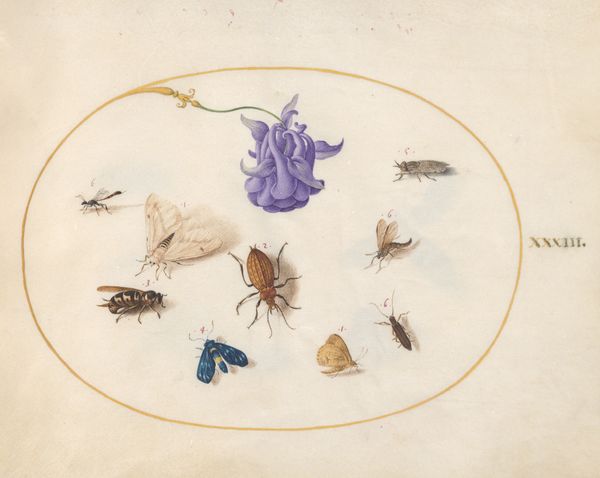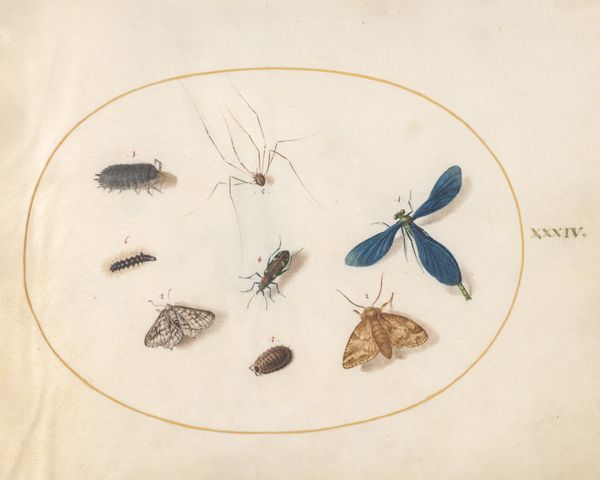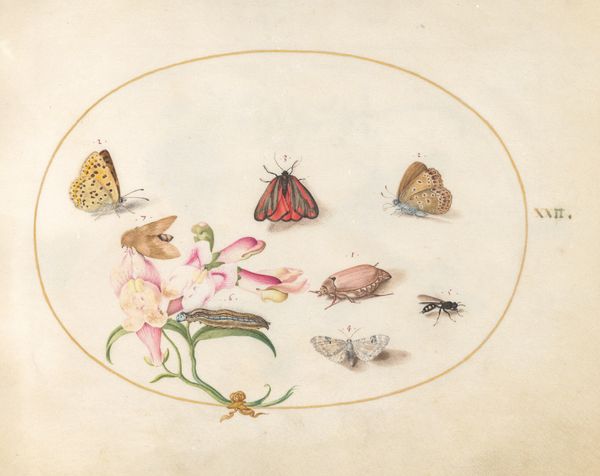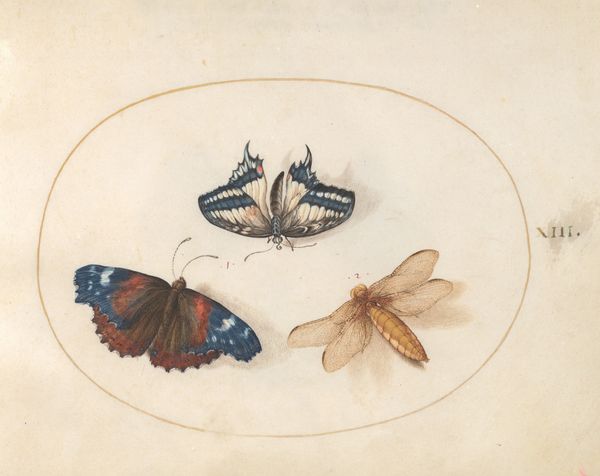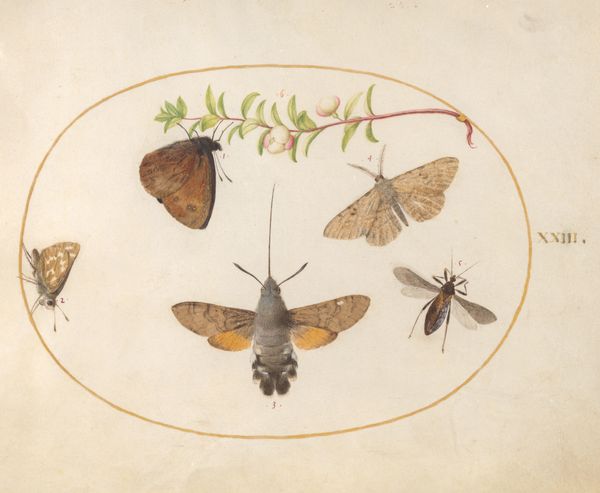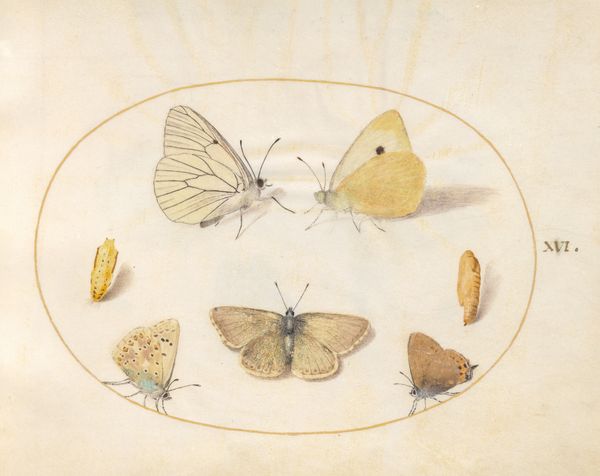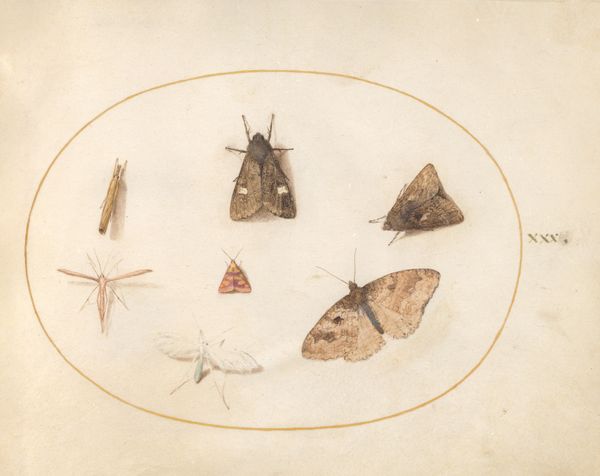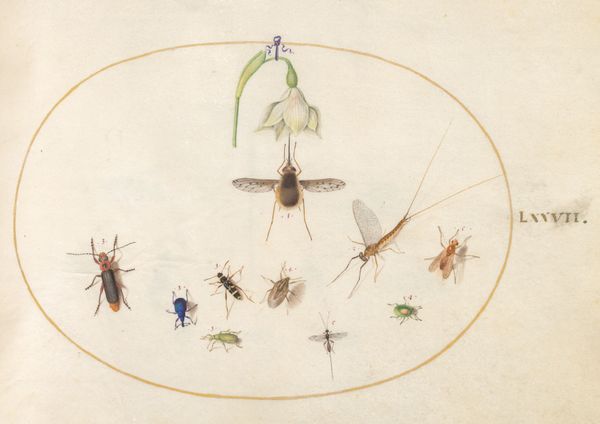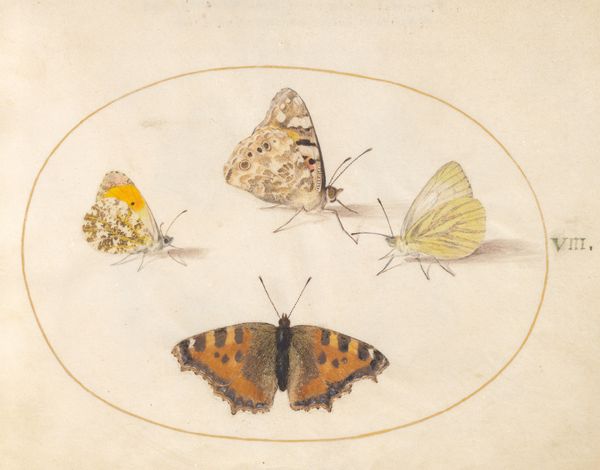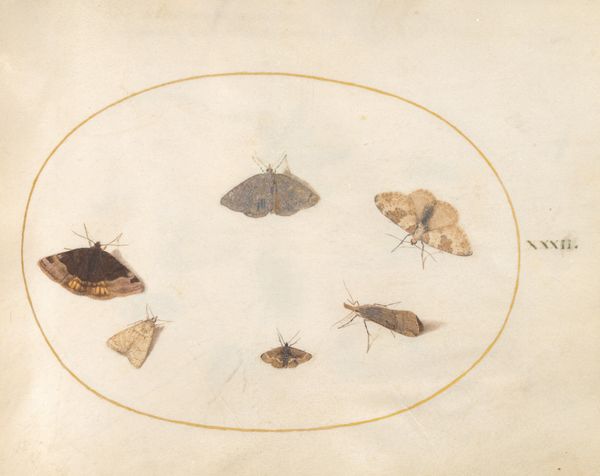
Plate 19: Two Butterflies with Five Other Insects c. 1575 - 1580
0:00
0:00
drawing, coloured-pencil, watercolor
#
drawing
#
coloured-pencil
#
11_renaissance
#
watercolor
#
coloured pencil
#
watercolor
Dimensions: page size (approximate): 14.3 x 18.4 cm (5 5/8 x 7 1/4 in.)
Copyright: National Gallery of Art: CC0 1.0
Curator: Good morning. Here we have "Plate 19: Two Butterflies with Five Other Insects," an intricate drawing attributed to Joris Hoefnagel, dating from around 1575 to 1580. It’s executed with both watercolor and colored pencil. Editor: Immediately, the detail and near scientific rendering evokes a certain Renaissance sensibility—a desire to both classify and marvel. There's a delicate, almost fragile, quality to the presentation, which makes you want to examine each insect very closely. Curator: Indeed. Hoefnagel was part of a cultural moment obsessed with the natural world, fueled by exploration and burgeoning scientific inquiry. These weren't simply decorative images; they served a role in understanding and documenting biodiversity, informing developments in fields such as medicine and botany. Editor: What is compelling, though, is the framing within this simple oval. The placement and use of color create movement. Your eye jumps between the dark mosquito at the bottom and the brilliant blue butterfly in the upper left, setting up a clear chromatic relationship. Curator: The very precision of execution reflects broader artistic and scientific concerns. It served elite patrons who viewed art as both an intellectual pursuit and a demonstration of wealth and learning. Consider how the medium—watercolor and colored pencil—lends itself to detail, fitting the meticulous aims. The insect illustrations from this time certainly influenced society. Editor: Speaking of detail, I'm struck by how much information he conveys with such limited tonal range. It is less an illusion of reality and more a transcription—a notation. That heightens the sense of each creature as an example. Curator: And what of the choice to depict insects specifically? These creatures often symbolized transformation, transience, even the baser aspects of human nature, but here, their presence might underscore an embrace of nature’s variety, reflecting shifting worldviews. Editor: Perhaps so. Well, viewing it through either lens reveals interesting attributes of the artist, the artistic approach, and even broader cultural context of the work, such as the patrons, function, and influence on society. Curator: Absolutely. Hopefully our insights have opened some interesting avenues to contemplate about this unique piece.
Comments
No comments
Be the first to comment and join the conversation on the ultimate creative platform.
